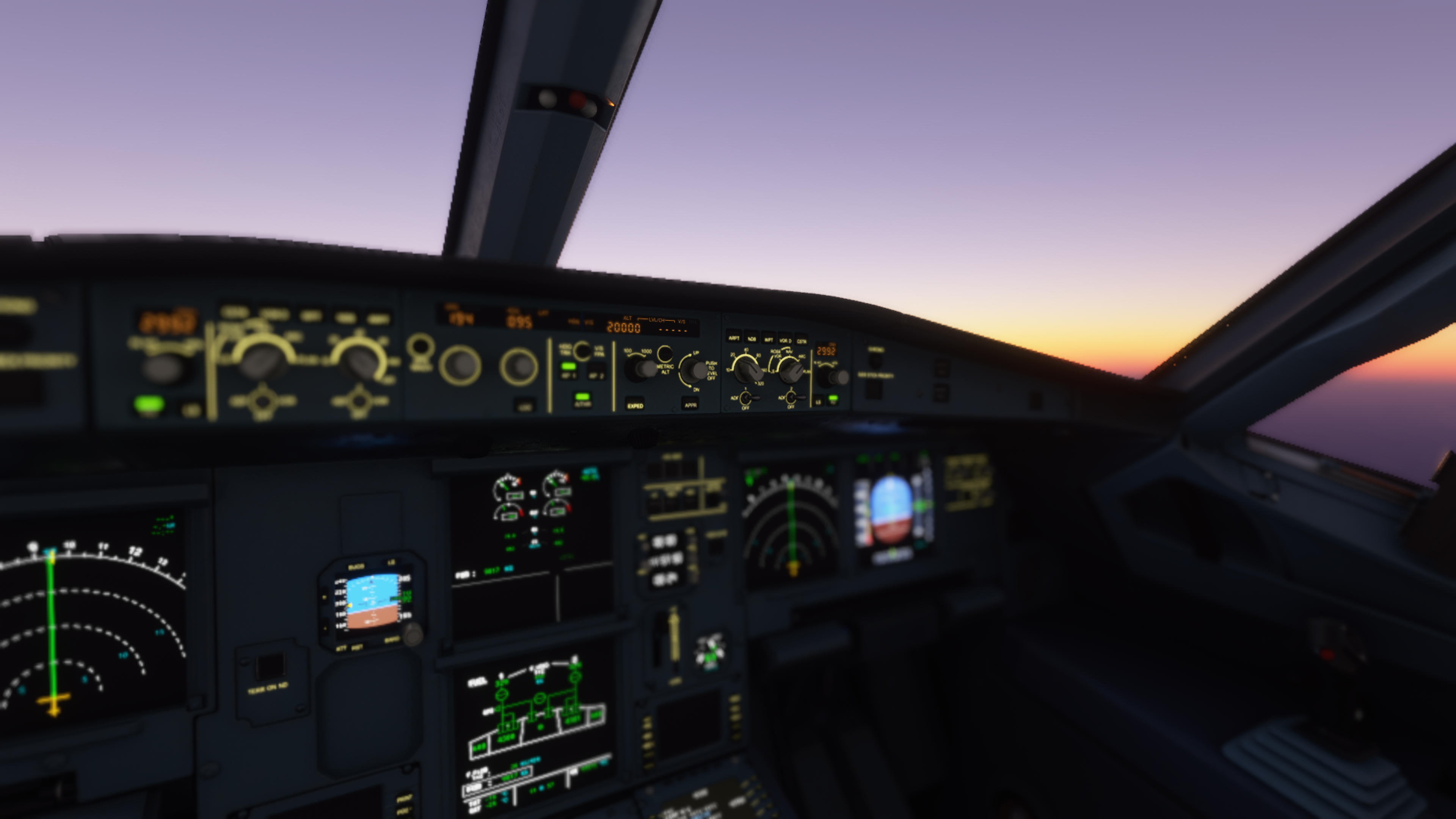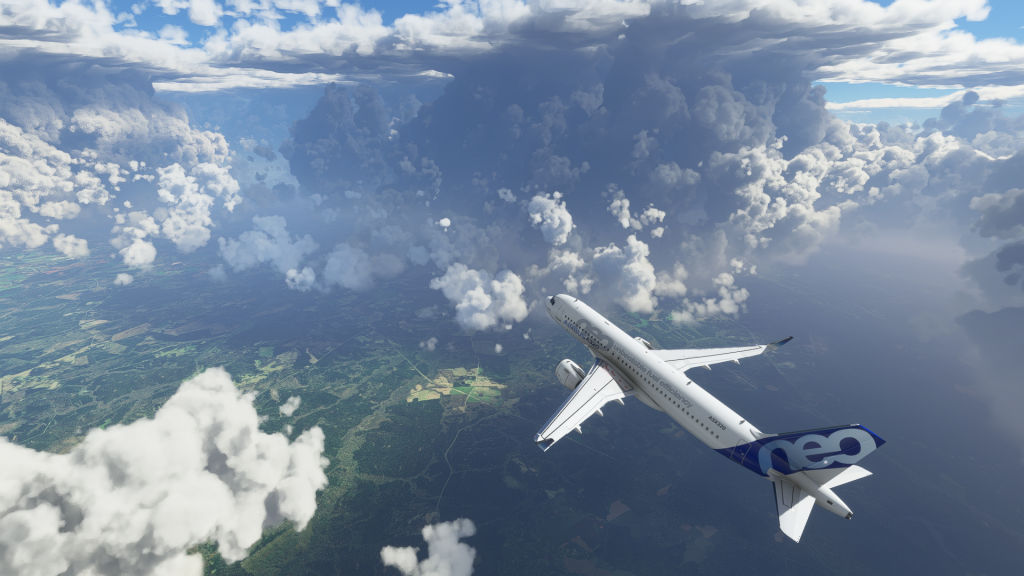Having spent a lot of time on planes, I like to think I’ve gained a basic understanding of the principles of flight. I once saw that diagram of air molecules going over a wing to create an upwards pointing arrow labelled “lift” and thought, hmm, yes, that makes intuitive sense to me. I watched the flaps extending before take off and, without ever feeling the need to do any further research into the topic, decided those bits of the wing are also important for keeping the plane going up. I also reckon, gun to my head, I could point out an aileron.
But autopilot remains a mystery, a black box whose inner workings are unknowable. Tedious people, those cynical goons who hang around airport bars, will say things like “pfft, these modern planes basically fly themselves”, dismissing the noble profession of pilotry in one sweeping, unsubstantiated accusation. Surely not, you think to yourself. Autopilot can’t be doing all the hard work? Flesh and blood pilots must be the ones in charge, arm wrestling with the fundamental forces of nature to chaperone hundreds of thousands of tons of pressurized metal through a murderous sky. Computers can’t be trusted to do that. You don’t get epaulettes if you’re not someone incredibly important. Try walking into any reputable epaulette store without status and the woman who sells epaulettes will call the police.
Videos by VICE
Microsoft Flight Simulator, the latest entry in the decades old Flight Simulator series, is celebrated not just for its spectacular scenery and impeccable aerodynamic modelling, but for the incredible detail lavished on its simulated cockpits. Glance over your right shoulder and you can count the individual stitches in the leather trim of the pilot’s seat. Press your face against the virtual windshield and you’ll make out scuffs and scratches glinting in the pale sunlight. Look down at your feet and you can sense the coarseness of the wiry carpets. The instrument panel is a twinkling matrix of tactile knobs and backlit buttons, just aching to be twiddled and pushed. Ca-click. Ca-chunk. It’s intoxicating, pretending to be a pilot.

In the cockpit of most large planes, somewhere near the center of this busy panel are the autopilot controls. And it’s here that I discovered the upsetting truth about how planes actually work. Microsoft Flight Simulator recreates not just the raw experience of hands-on flying, but the specific functionality of real-world autopilot systems, which it turns out are more powerful than us naive groundfolk could ever have imagined.
Dial in a few GPS coordinates, set an altitude, and at the push of a button the plane will automatically fly itself to whichever part of the globe you ask it to, freeing you up to leave the room to go make a tofurkey bagel or take a late afternoon nap. As I write, my Airbus A320neo is making a graceful left turn above Oslo on it’s way to London Heathrow, with absolutely zero input from me, like an obedient horse carrying a passed out cowboy home from the saloon, or when you get upgraded to one of those rental cars that can parallel park.
The doubters were right. Planes fly themselves. Pilots are full of shit and have been lying to us for decades as part of a vast conspiracy to keep gullible passengers in the dark. When’s the last time you actually laid eyes on a pilot in direct control of a plane? You haven’t. Nobody has. Pilots hide behind closed doors, playing blackjack and blowing kisses at clouds while a fancy calculator handles all of the important wing business. They would be laughing behind our backs, if only they weren’t sitting at the front of the plane, with their backs to us.

Desperate to learn how deep this rabbit hole goes, I set out to interrogate some actual pilots about how their planes allegedly work. Why have they kept aviation’s darkest secret from the public for so long? And if they’re not personally manhandling the plane through the stratosphere on a second-by-second basis, what exactly are they doing up there?
Jon Mammen, corporate pilot: “People assume that an autopilot has a brain, or is actually making some kind of decision about flying the airplane. In reality, autopilots are usually dumb, doing a single, or some combination of, basic functions in perpetuity. We don’t engage the autopilot and then sit back while it takes care of everything.”
Which is exactly what you would say if you were the agent of a shady cabal of commercial airline pilots, whose cushy, long-running scheme to zoom around in the sky with their feet up on the dashboard, blissfully humming showtunes to themselves is about to be blown wide open.

How many important decisions could an autopilot possibly have to make, anyway? A self-driving car might have to consider the ethics of swerving around a family of ducks to hit an escaped convict, but there are hardly any moral dilemmas in the sky to worry about. I don’t think it’s overstating my case to suggest that the autopilot can capably handle every possible situation that a plane might encounter, and that pilots are largely decorative at this point.
Leonard Wick, flight instructor from New Zealand: “Most pilots love to hand fly the aircraft as much as we can. It’s very important for us to maintain our skill with hand flying the plane, and it’s also a lot more fun. The autopilot is used as a workload management tool. It’s mostly used during cruise and initial arrival when the crew is busy performing other tasks. ”
A workload management tool? Trello is a workload management tool. The notes section on my dog-a-day desk calendar is a workload management tool. The arcane network of algorithms and circuitry that assumes direct control of an aeroplane the moment the doors shut, freeing the pilot up for trombone lessons and lavish cockpit dinner parties, does not, I feel, fall into this particular category, Leonard.

Cody Vance, private pilot: “When autopilot is engaged, we monitor the aircraft and verify it’s doing what we want it to do, handle radio calls and handoffs from control centers, change routing when handed off due to traffic, receive weather reports at the destination airport, and make any configuration changes that need to happen.”
The pilots are clearly rattled. Fearing that I’m edging closer to the truth, they circle the wagons, reeling off a list of fictional pilot duties to mask the fact that they’re up there every day, rehearsing for plays and giving one another manicures, while a hard-working processor figures out which way the plane should be pointing.
Tom Holden, a Boeing 737 first officer: “I love explaining my job to the public, especially when it makes them feel more comfortable about flying. With the autopilot engaged, both pilots are more able to ‘work ahead’ and get ready for what’s next. The most prominent example is preparation for an arrival. Terminal arrival routes and instrument approaches require quite a bit of programming, briefing, and general preparation. It’s a lot easier for both pilots to prepare when the AP is running.”

Sorry Tom, I’m not buying into the elaborate alibi they drilled into you at flight school, between lessons on how to identify and press the autopilot button, no matter how plausible, comprehensive and patient you’re being.
John Mayes, first officer at a major American airline: “If it’s a relatively short flight, most of the time the autopilot is active would be dedicated to briefing the future aspects of the flight: weather, traffic, routes, the approach, landing, fuel needs and so on. If it’s a long flight, say intercontinental, one of the pilots may sleep while the other monitors systems. You always want to stay ahead of the airplane and ahead of the flight.”
Look, I’m not suggesting that pilots don’t do at least some of these things, but I just think it’s peculiar that every pilot in the world has found the time to learn to juggle and solve a Rubik’s cube in under a minute. If planning ahead was as important as these pilots repeatedly claim, how have I been able to leave Flight Simulator running in the background for several consequence-free hours while I sit around watching YouTube videos about how microwaves work?

Graham Smith, a Boeing 747-400 first officer at an international cargo airliner: “We do get jokes about not doing anything in the cockpit, but while there is plenty of time where the aircraft is flying on autopilot, current technology does not and will not facilitate airplanes flying themselves completely. Autopilot frees our hands to monitor the aircraft systems, and to flight plan when ATC requests a different route or deviations for weather.”
The only weather my autopilot needs to navigate around is this ceaseless torrent of pilot lies. Hardly the illustrious future of powered flight the Wright Brothers had in mind when they were duct taping wings to a shopping trolley in order to prank their elderly neighbor back in 1903, is it?
Jordan Walker, certified flight instructor: “Pilots are still essential to the operation of airplanes. Autopilots are extremely useful but like anything made by humans, it has limitations and is subject to occasional mechanical or programming errors. Pilots aren’t there for when things are going right, we’re there for when things are going wrong.”

Okay Jordan, full disclosure. My unsupervised Airbus A320neo, which had been following a breadcrumb trail of GPS waypoints like a faithful metal bloodhound, ran into a small technical issue. It’s barely worth mentioning, but something—turbulence, ice, a family of migratory swans sucked into the engine—forced the autopilot to disengage, and the aircraft entered into what experts might call a “death spiral”, a “doom cartwheel” or “un pirouette de mort”. I was alerted to this when, from my sofa where I was watching Murder She Wrote in my underwear, I heard the Xbox controller noisily vibrate itself off the desk.
By the time I realized what was happening it was too late. My less-than-complete understanding of how autopilot works, combined with my habit of repeatedly vacating the cockpit to do laundry, resulted in catastrophe. I mention this in the interests of transparency, and I direct my critics to the initial four hours and seventeen minutes of the journey, which had been entirely uneventful and perfectly pleasant flying. The jury on autopilot, for now, is back out.
Jordan Walker again: “I’m not sure what happened with your aircraft there. I would need a lot more information. Was there weather? If you flew into turbulence or a storm, the autopilot might have exceeded its flight control limits trying to keep the plane level and clicked off. That’d be my guess.”
These are important questions, but I’m afraid I’m only human, Jordan. To get to the bottom of this we’d have to speak to my manager, the autopilot.
More
From VICE
-

(Photo by Tim Mosenfelder/Getty Images) -

Jeff Kravitz/FilmMagic, Inc -

Billy Bob Thornton at the 'Bad Santa' premiere (Photo by Dave Benett/Getty Images) -

Home Alone (Credit: 20th Century Fox)
